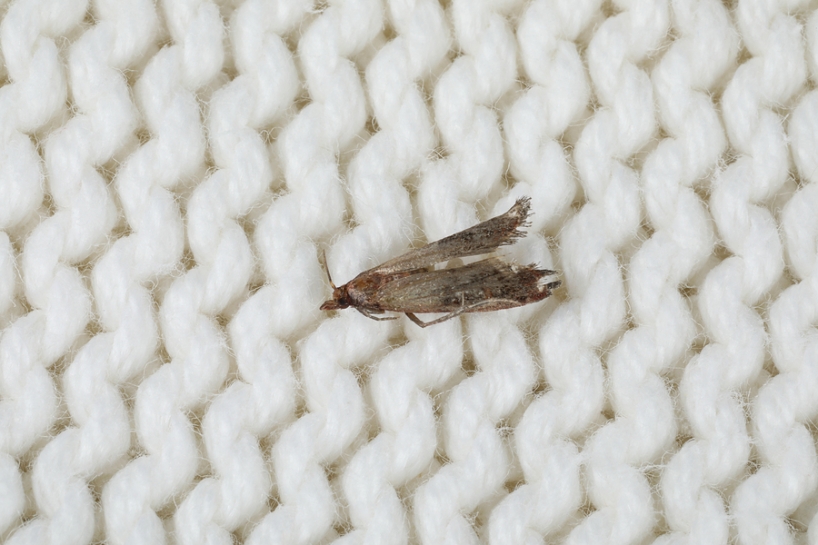
June 9th, 2021 by
Those pesky moths eat your clothes and plague your summer evenings but how much do we really know about them? What you think you know may not be strictly accurate. Here are some of the most common beliefs about moths and why they may not be all they seem.
Moths munch through clothes
 This is a reasonable assumption to make. Yes, finding random, unexplained holes in your clothes indicates a moth infestation, and this is most likely true. However, it’s not strictly the moths that are eating your clothes: it’s the larvae. We know this to be true because it’s only at the larvae stage that moths even have mouths! Adult moths lay their eggs in fabric and the larvae that hatch from them feed until they reach the cocoon stage. Unfortunately, it’s your clothes they feed on – among other things.
This is a reasonable assumption to make. Yes, finding random, unexplained holes in your clothes indicates a moth infestation, and this is most likely true. However, it’s not strictly the moths that are eating your clothes: it’s the larvae. We know this to be true because it’s only at the larvae stage that moths even have mouths! Adult moths lay their eggs in fabric and the larvae that hatch from them feed until they reach the cocoon stage. Unfortunately, it’s your clothes they feed on – among other things.
Clothes moths eat clothes and carpet moths eat carpet
While there are some differences between clothes moths and carpet moths, their diet is not one of them. Both species of moth larvae will eat clothes and rugs alike. However, most moth killers will work on both species of moth, too.
All fabric is fair game to moths
The damage that moth larvae cause to clothes, carpets, and soft furnishings can be extensive and we’ve already established that they’re not too fussy in sticking to one thing so it would seem that they’ll feed on kind of fabric. This isn’t true: they’re actually much more discerning than that and are only attracted to natural fibres. That’s because they feed on keratin, a naturally derived protein that appears in many natural fibres. It can be found in cotton, wool, silk, fur, feathers, and paper. That’s why your silk scarf is in infinitely more danger than a polyester shirt. They won’t eat synthetic fibres, but if there is any natural fibre in the mix, it won’t be safe from their feeding frenzy.
Moths like to eat clean clothes
You may know that another unwelcome bug, head lice, actually prefer clean hair and having them is not an indication of being dirty. This is not the case for moths as they much prefer dirty clothes and carpets. They are particularly attracted to the residues we leave on clothes from wearing them such as oils from the skin, sweat, and hair and will particularly endeavour to seek out clothes that have been worn. Even trying something on for a short space of time will leave some residues behind. Of course, this is not a slur on your hygiene. It’s not uncommon to wear something that requires hand washing or dry cleaning a few times in between washes, such as cashmere or silk, and these are just the fabrics moth larvae love the most. Not putting clothes that have been worn for any length of time back into the wardrobe or drawer is a good preventative measure but where this is not practical, consider storing these natural fabric clothes in some kind of protective cover.
Protector C Super Moth Killer Spray 2 x 1L
Price: £19.99
Buy Now
You can kill moth larvae by washing at a high temperature
This is technically true, but does this actually work as a solution? Unfortunately, the answer is no: just ask yourself whether you would boil wash your silk dress. The types of fabric most at danger from moths are just the ones that won’t tolerate such harsh cleaning.
It would only be a temporary fix anyway, as adult moths would still be free to lay new eggs in the fabric and the whole life cycle would begin again.
To eradicate a moth infestation, it’s advisable to use a combination of pest control treatments including smoke fumers, moth killing spray, and hanging moth proofers in your wardrobe. Consider things like the moth proofer a continuous strategy to keep them at bay along with preventative measures such as keeping clothes clean and not overcrowding your wardrobe and drawers (stuffed spaces create perfect conditions for moths to live and breed).
Comments
Leave a reply
Your e-mail address will not be published. All fields are required


